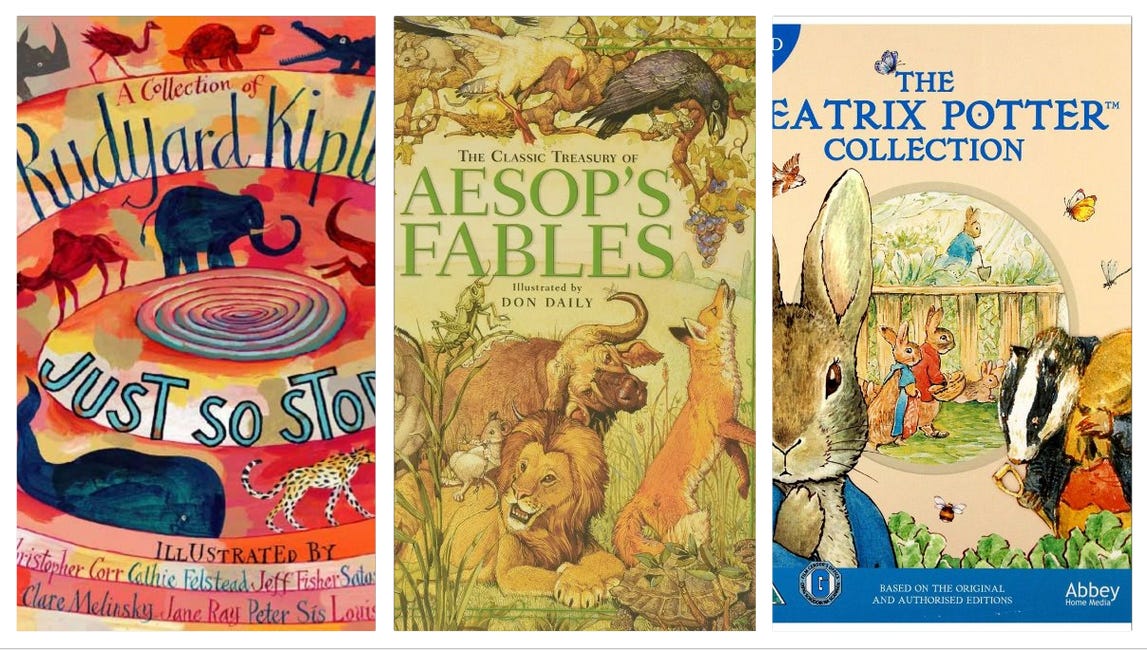Logic Pitfalls in the Modern Age: Teach Kids to See What Others Ignore
Logic Fallacy Series #3
Our society has fallen for a lot of bad logic the past few years
“There was one study on this drug, so it’s the definitive answer”
Imagine instead we taught kids logic. How might the world look different?
Logic Fallacies Series #3: Teach Kids to See What Others Ignore
"Facts do not cease to exist because they are ignored." Aldous Huxley
NOTE: This is part of a series on logical fallacies, you’ll find prior posts under the Logic tab here.
What the Average Person Sees: The Hasty Generalization Fallacy
The hasty generalization is a logic fallacy that occurs when someone draws a broad conclusion about a group or category of things based on a limited or biased sample. In other words, this fallacy involves making a sweeping statement or assumption based on insufficient evidence.
The most dangerous form of this fallacy is when only limited information is given to an audience and it is presented by an authoritative figure or agency. This falls under the authority logic fallacy (read more here). The public assumes that this limited information is representative of all available information. There are striking examples of this in the past few years.
Examples of Hasty Generalizations
“I read about this working for someone, so it must work for everyone.”
“I didn’t have any side effects, therefore no one else could have side effects”
“The news says people died after Y. The reason is and has to be Y and nothing else”
“I read a story about a homeschool family whose kids were never allowed out of the house so all homeschool families must be like this”
“I wouldn’t make that decision, therefore others who did must be stupid or misinformed”
Historical Example
Significant ethical issues arise from the hasty generalization and history is filled with them. Hasty generalizations often result in the unfair targeting of a minority group whom the majority are taught to fear. I’m sure you can think of an example in the past few years. A less recent example includes the U.S. government’s response to the attack on Pearl Harbor.
During World War II, the U.S. government implemented Executive Order 9066, which authorized the forced relocation and internment of over 120,000 Japanese Americans, two-thirds of whom were native-born U.S. citizens. The government justified this action by claiming that Japanese Americans posed a potential threat to national security because the Japanese military had attacked. In other words, they were to be feared.
Imagine instead we were taught in our youth to push back
Show me the data!
Is there any more relevant information?
Is that the only conclusion that can be drawn?
How might the world look different? Let’s talk about how to teach children to do just that.
Grammar Age (5-9 years old)
In the younger years, the goal is simple: get kids to ask for more information. Help kids get used to the idea that they will not always be given all the information they need.
Detail Duel: This is a game we made up in our family. It goes like this.
There are 4 camels and 3 tigers on a boat, how many goats are there?
Despite not having enough information, most kids will answer (adults too). This speaks to an intrinsic desire to find an answer, even if you can’t. The trick to this game is to mix questions that DO have answers with ones that don’t. See if you can catch your kid trying to give an answer when they can’t. Then, have them ask you for more information.
"The Ugly Duckling" by Hans Christian Andersen. Stories are the best ways to teach young children about anything. Avoiding hasty generalization starts simply with identifying a hasty generalization. In this story, a duck is born and looks different from all the other ducklings. Guide students to recognize how the other animals make assumptions about the duckling based solely on its appearance. It doesn’t look like them so it’s assumed the ugly duckling is not as useful or has something wrong with it. Later of course it turns out to be a majestic swan. Discuss the dangers of making such a hasty judgment. Appearances do not define someone’s worth. Further, often things that seem different turn out to be the best path forward. NOTE: There are ton of versions of this story out there. Find the original. It’s so beautiful.
“Charlotte’s Web” by E.B. White. is another beautiful example of the hasty generalization logic fallacy for late Grammar Age students. Charlotte, a spider, is eloquent, kind, compassionate, and quite intelligent. One wouldn’t think the hero of the story would be a spider but it is. Sometimes the best lessons can come from places you least expect them to.
Logic Age (10-13 years old)
"The Giver" by Lois Lowry. This is a powerful story about a Jonas who live is a seemingly utopian society. Characters form hasty generalizations about their world, thinking that it is perfect and there are no downsides to being controlled. These assumptions are shattered as Jonas gains more insight into the true nature of his society. Through discussion, ask students the dangers of forming conclusions without questioning or seeking a deeper understanding—a valuable lesson that can be applied to our complex and ever changing world.
Deconstruct Advertisements. Select ads that make sweeping claims such as "everyone loves our burgers" or "kids everywhere choose our fries." Guide students to recognize how these statements form assumptions about people's preferences based on a limited sample. This exercise also allows students to dissect the tactics advertisers use to manipulate them into purchase.
Rhetoric Age (14-18+ years old)
Bias in Statistics. There are a lot of these and all are important to discuss with students. Here are a few common ones.
Correlations is not Causation: Discuss examples of when correlation to information resulted in poor logic. Example: The number of firefighters responding to a fire is correlated with the amount of fire damage. One Conclusion: Sending more firefighters leads to more damage. However, this is a fallacy. The correlation stems from larger fires requiring more firefighters and causing more damage.
Outliers: Explain how outliers can skew statistics. Use the example of average income in a neighborhood where a few extremely wealthy individuals live, which could lead to a false impression of the overall wealth of an area.
Sample Size: Discuss how a small sample size can lead to hasty generalizations. Example: survey results from just a few people claiming "everyone loves a certain brand."
Representative Sample: Explain the importance of a representative sample. Show how surveying only a specific demographic can lead to inaccurate conclusions, like assuming all teenagers have the same opinion based on surveying only high school athletes.
Deconstruct Social Media. This may be the most important thing you can teach kids. Not to trust the Media (of any kind) at face value. Take specific examples. Try to use ones of specific importance to kids. Example “All teenagers are addicted to their phones.” From here, identify the evidence that the post provides (typically none). Ask questions. “Is it accurate to say that every single teenager is addicted to their phone?” Provide counter-examples. “Are there teenagers who are addicted to their phones?” Discuss the implications of both assuming ALL teenagers are addicted as well as NONE of teenagers are addicted. Both have important ramifications for kids. Do this activity for ideas that students bring up! Can anyone find holes in their logic. The best thing you can do for a student is show them that they still have much to learn (good for adults too)
Conclusions
This world is filled with entities that are trying to get you to believe something, buy something, support something. Our goal is to teach kids to listen to THEMSELVES. Let them open their eyes to the beauty inside.
This is how you foster a beautiful mind.
Join 𝓒𝖑𝖆𝖗𝖎𝖋𝖎𝓔𝒅! Paid members receive Education Strategies, Thriving Learner Workshops, Masterpiece Lesson Plans, 24/7 Community & Science of Kids. Can’t wait to get to know you♥️ Join Us!







Excellent reminder about the importance of teaching and talking about logic! My kids just got an illustrated copy of the original Ugly Duckling... it takes longer to read than the modern adaptations, but I agree, is lovely!